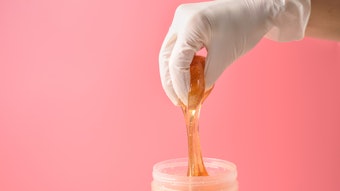
With winter winding down and spring just around the corner, people are ready to come out of hibernation and put a little color back into their skin. What better way to get pale complexions glowing again than by following a few tanning tips from self-tanning expert Toni Brattin, founder and owner of Toni Brattin & Co., Inc.?
“There’s something about having a bit of tan on your skin that everyone loves,” said Brattin. “Not only does a little color make us look healthy and fit; it also tends to make us look younger and, more importantly, feel younger.”
Brattin’s seven tips for getting a great-looking indoor tan:
- Exfoliate and moisturize. “During the colder months of the year people often don’t keep their skin properly moisturized or cared for,” said Brattin. “And they develop what I call ‘winter skin’; very dry skin covered by an accumulation of dead surface cells. Attempting to tan without first removing this layer of dead surface skin is probably the most common tanning error.” When the exfoliating step gets missed, people wind up tanning dead surface skin, which soon sloughs off, leaving splotches of lighter colored new skin where the old, dead skin cells were. “When you self-tan with lotions or sprays, the drier areas of your body, like elbows, knees and ankles are going to absorb more of the product,” said Brattin. “And, therefore, they often turn darker than other areas of the body. By thoroughly exfoliating first and then moisturizing these problem areas before you begin tanning, you’ll ensure a more even distribution of the tanning product and get a more even tan.”
- Jumpstart an indoor tan. Due to concerns about premature wrinkling and skin cancer, gone are the days of lying on a hot beach for hours and hours soaking up the rays. A little bit of natural sun is okay for some people and provides the body with vitamin D. It also stimulates the melanin in skin which can give self-tanning a bit of a boost for faster and darker results. “Enjoy the outdoors, but protect against dangerous sun exposure,” said Brattin. “With a little exposure, you can achieve a great tan safely, without damaging your skin."
- “Shows where it goes” - the key to even tanning. “One of the biggest problems people experience when they use self-tanning products is streaking and unevenness,” said Brattin. “That’s because many of the tanning creams and lotions have no color or a very light color, so you have to sit and wait – sometimes for hours - to see if the product was evenly applied or whether you missed an area entirely.” Brattin said she solves this problem by using a product with darker pigment, which allows the user to see it being evenly dispersed on the skin, and gives the user an instant boost of coloring.
- Spot-test first. “Many tanning products can create adverse skin reactions under certain conditions, especially for those with sensitive skin,” said Brattin. “I recommend that an individual spot-test a small area on their body before widely applying any cosmetic product, including a self-tanner they’ve never used before.”
- Do not get trapped by a self-tanner. “The active ingredients that cause tanning to occur, dihydroxyacetone and erythrulose, are chemicals with very unpleasant odors,” said Brattin. “Many times a person applies a tanning product only to later discover that the chemical odor left on their skin remains so strong that they can’t comfortably go out in public, even after showering.” Although the smell eventually subsides, it can still embarrass self-tanners later on if they engage in sports or other physical activities because perspiration causes the chemical odor to re-emerge from the pores. “Better quality tanning products use advanced chemistry to eliminate those noxious odors,” said Brattin. “So be sure the self-tanning product you choose to rub on to your skin has no noxious odor.” It's also important to plan ahead. Some self-tanning systems require a several-hour waiting period before dressing, so it's important to be sure the product you're using is a quick-tanning one.
- Spray on tans - better hold your breath. “Sometimes people grab a spray-on tan at the store because it looks fast and easy,” said Brattin. “But some of the tanning sprays are very apt to produce overspray which is then inhaled, and some people don’t react well to that.” The overspray can also settle on carpet, tiles and furniture. “Some who use spray tanning products have discovered the best place to apply them is outside or in the garage,” said Brattin. “If you’re going to have a spray tan applied at a salon, the amount of overspray that you may inhale could be considerable, so try not to breathe during the process, or wear a mask when possible.”
- Simple tanning tools help create professional results. It seems logical that anyone rubbing tanning lotions or gels onto their body would want to use gloves to protect their fingers and palms from becoming over-pigmented. “Many people are so eager to rub the tanning product onto their bodies that they don’t stop and consider what will happen to their bare hands after being in contact with the lotion for extended periods,” said Brattin.










